Abstract
1. Receptor cell activity in the frog's eminentia olfactoria was recorded using metal-filled micro-electrodes. 2. Several units discharged spontaneously with a mean frequency lower than 0.2 spikes per sec, or were silent in periods of up to 5 min. The other units displayed spontaneous activities between 0.2 and 1.05 spikes per sec; their activity could be modelled with a Poisson process. 3. Near-threshold responses to odour stimulation were investigated, considering several stimulations within a small concentration range. Low concentration stimulations were sometimes followed by a response, sometimes not. The concept of response probability is introduced to describe this incertitude. 4. The distribution of the number of spikes in several odour trials at low concentrations showed a reasonable agreement with two types of Poisson distribution. 5. The findings are discussed in connexion with receptor cell sensitivity and the excitation of second order neurones in the bulb.
Full text
PDF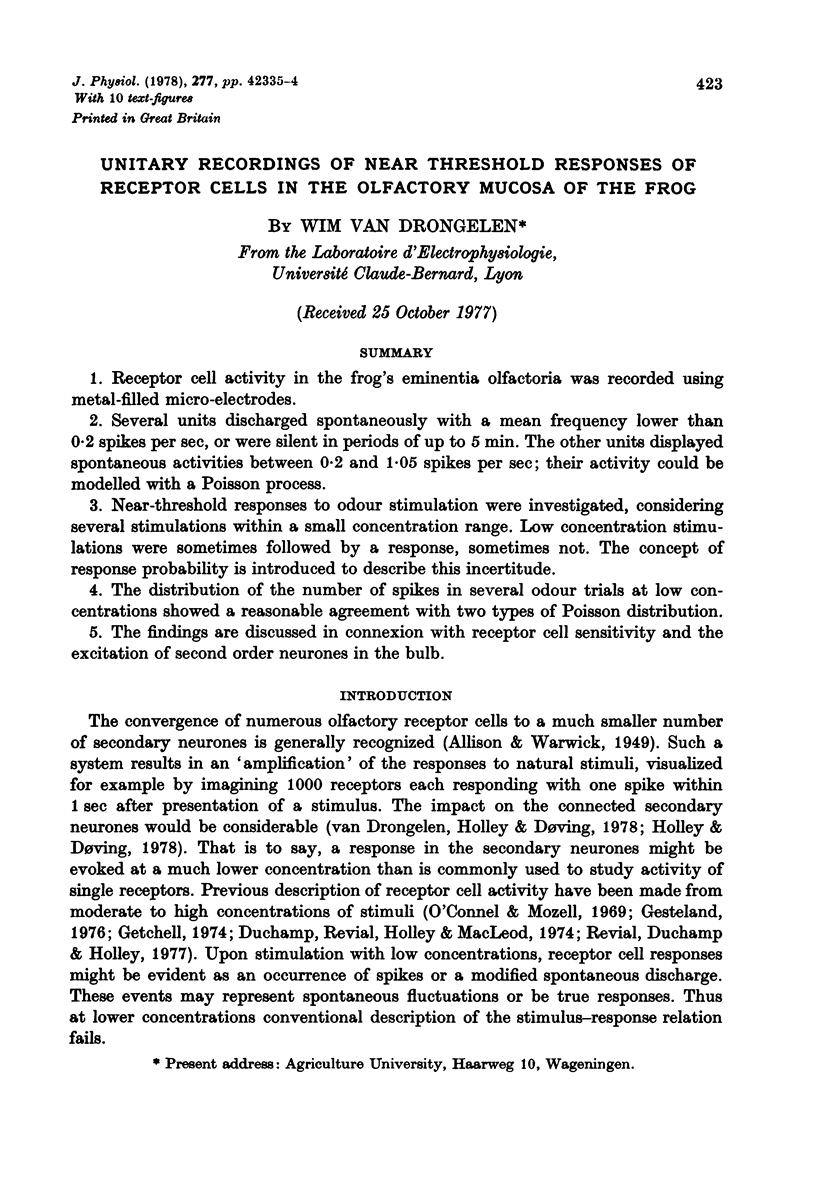
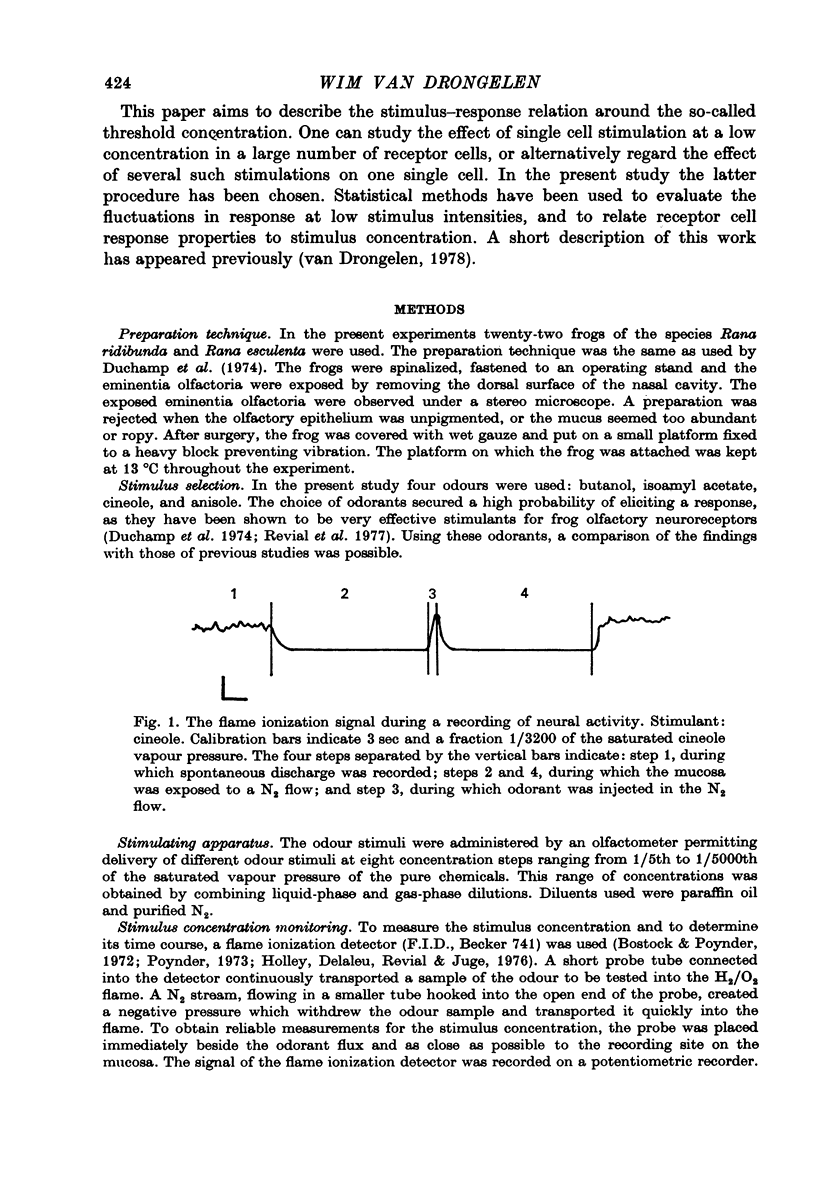
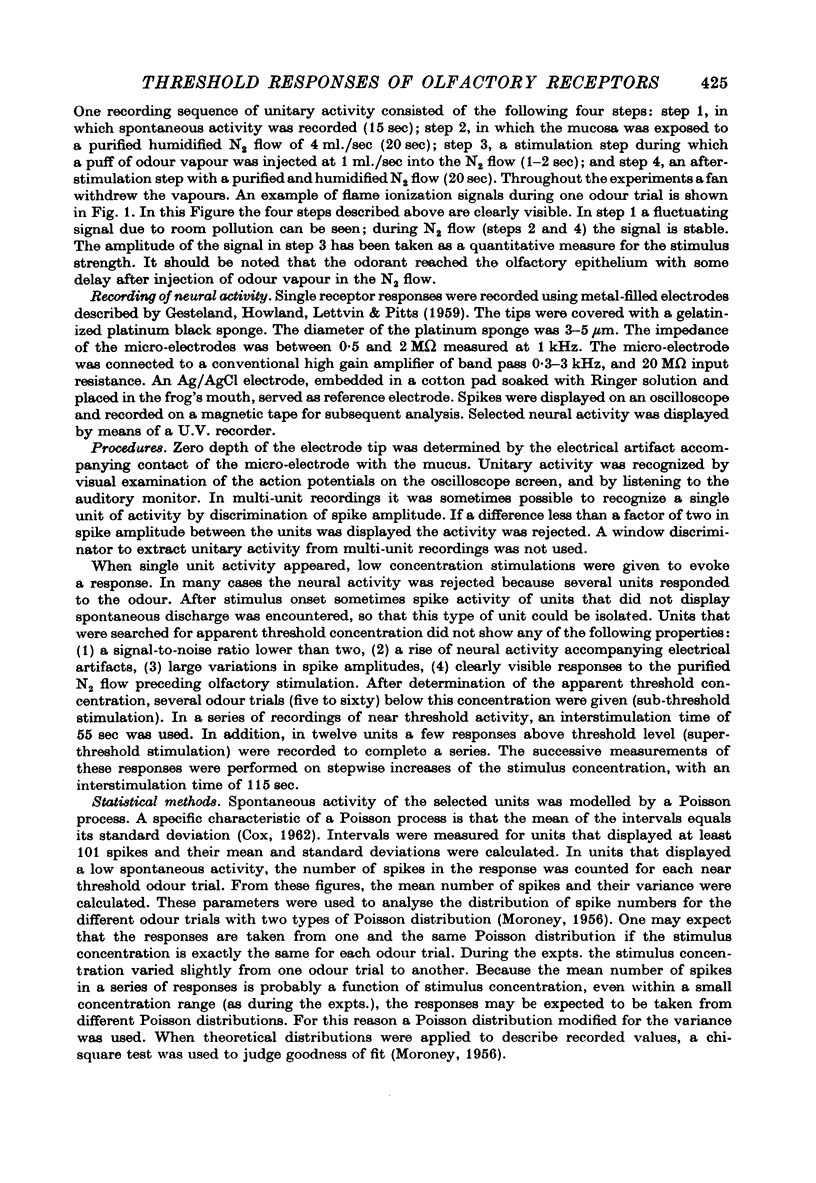
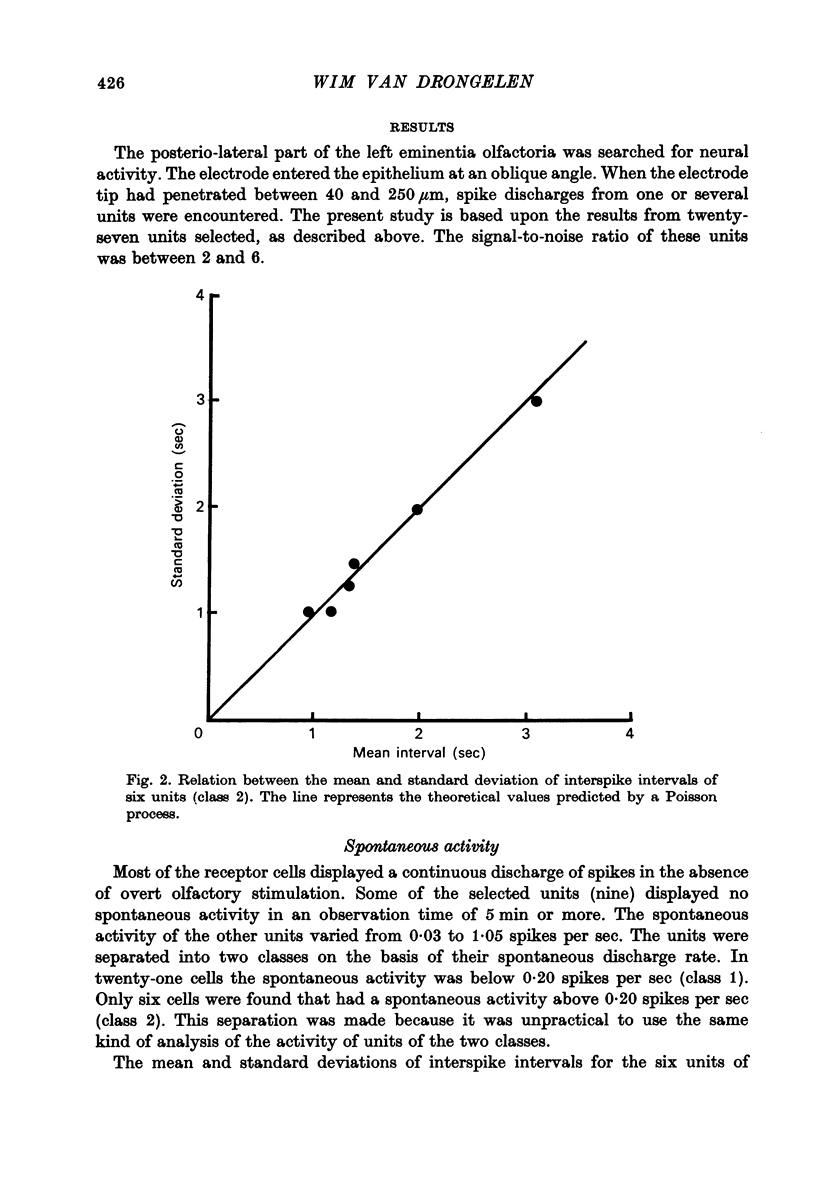
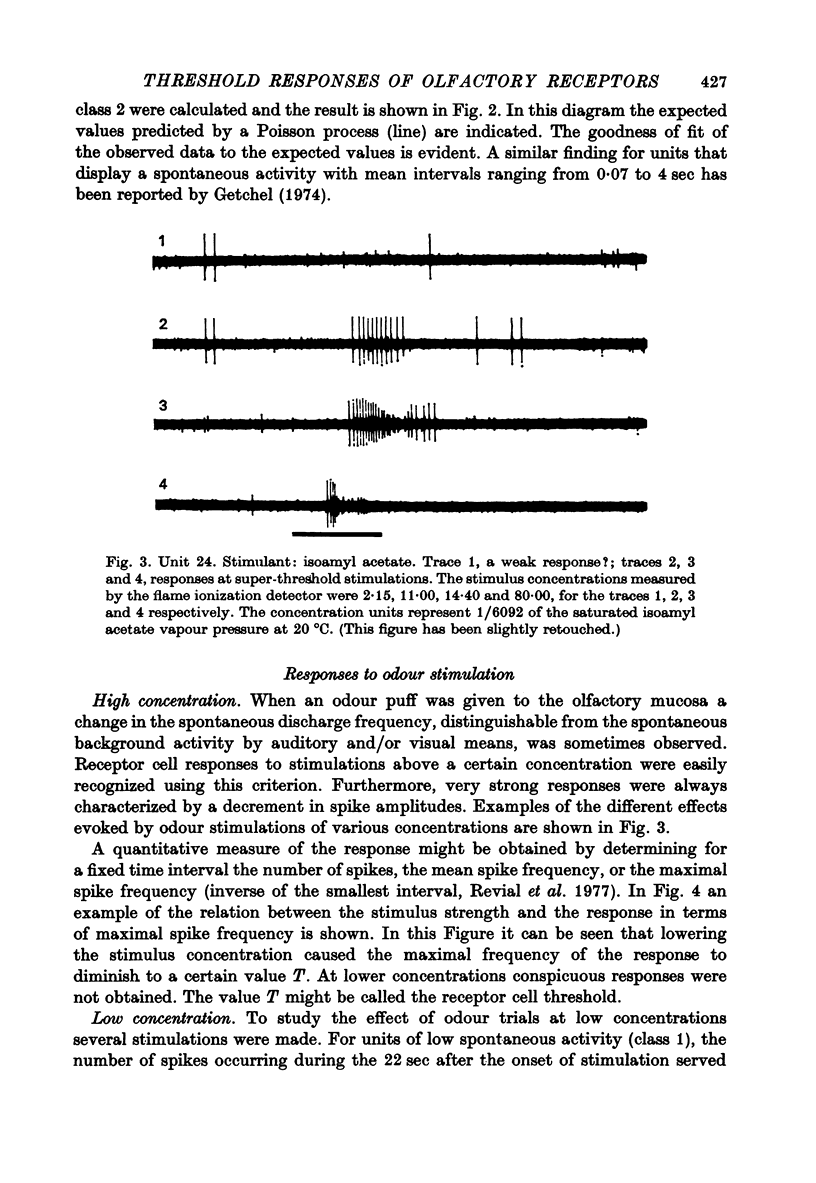
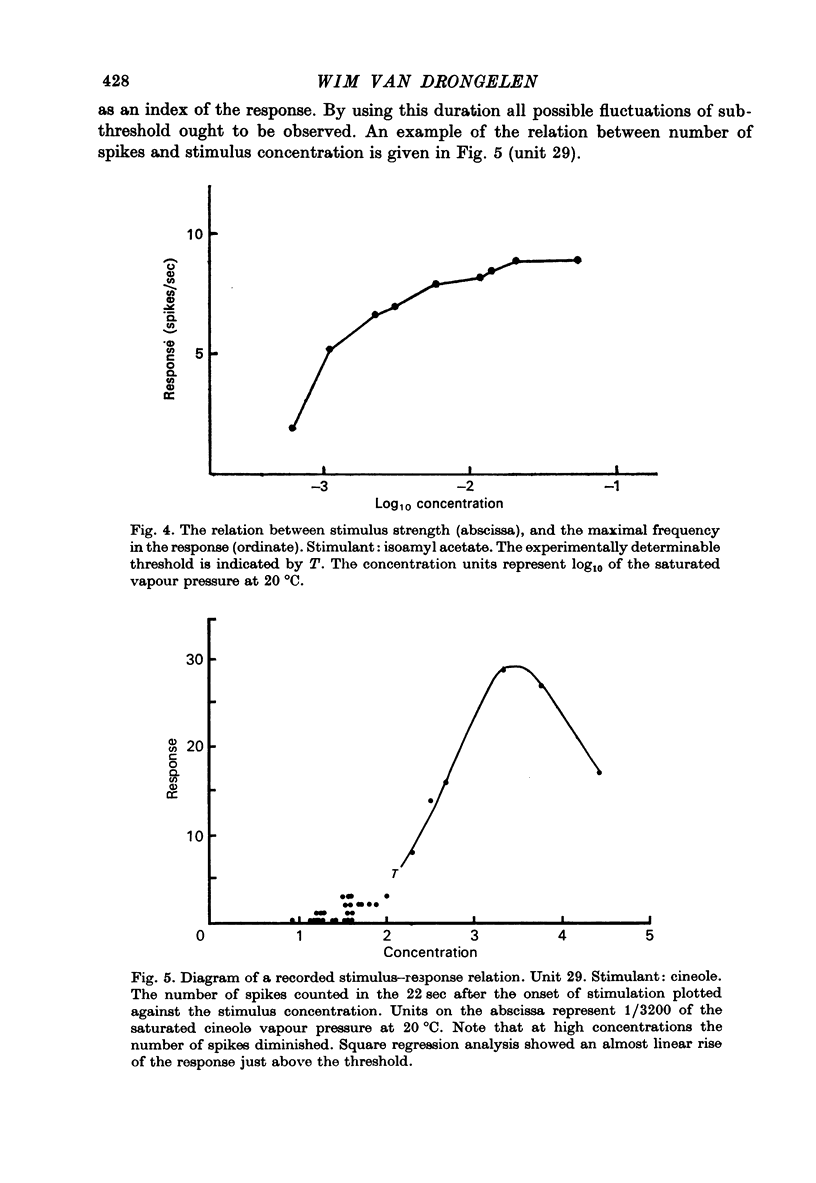
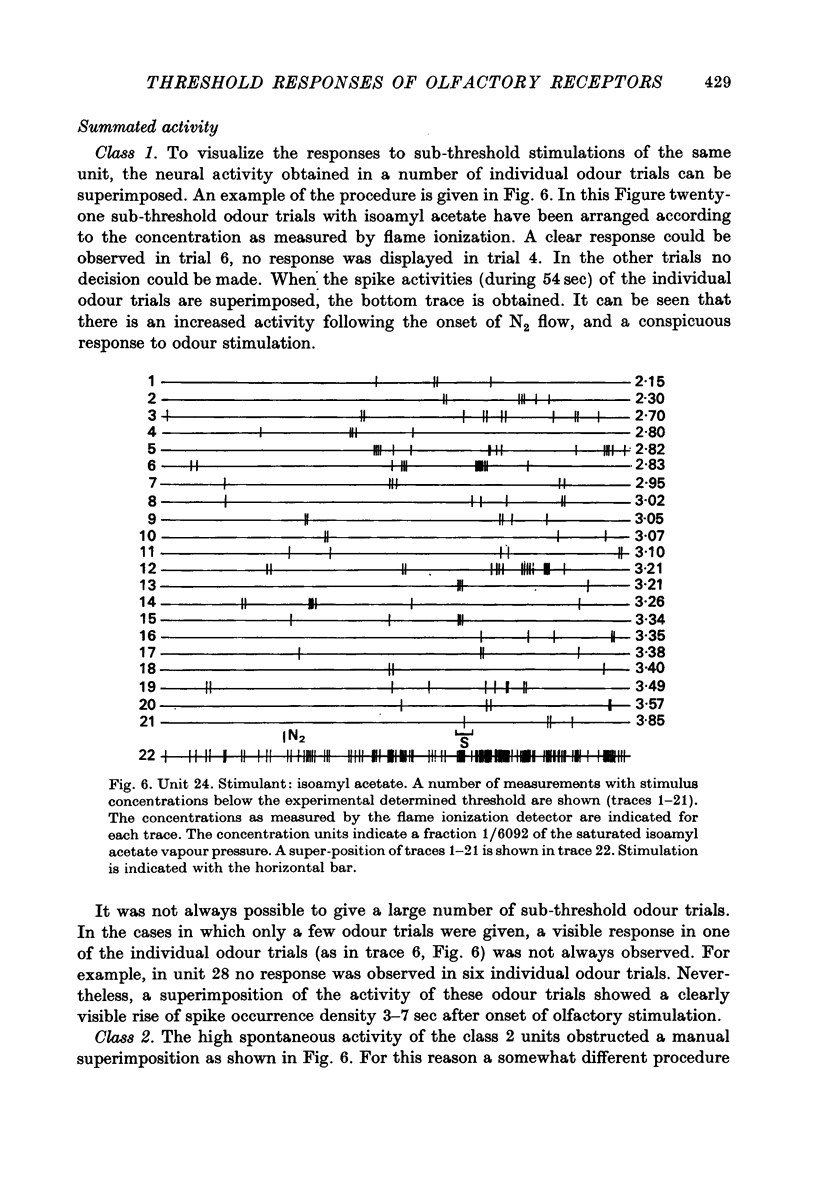
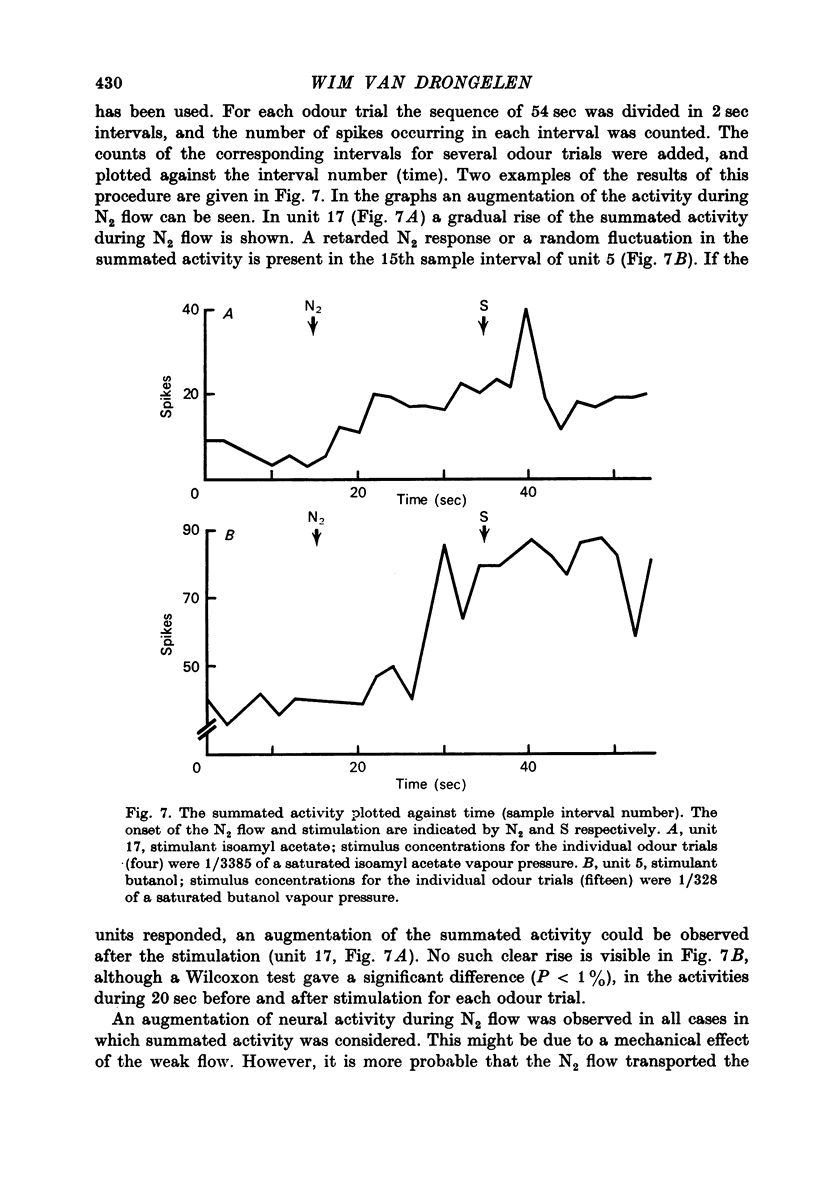
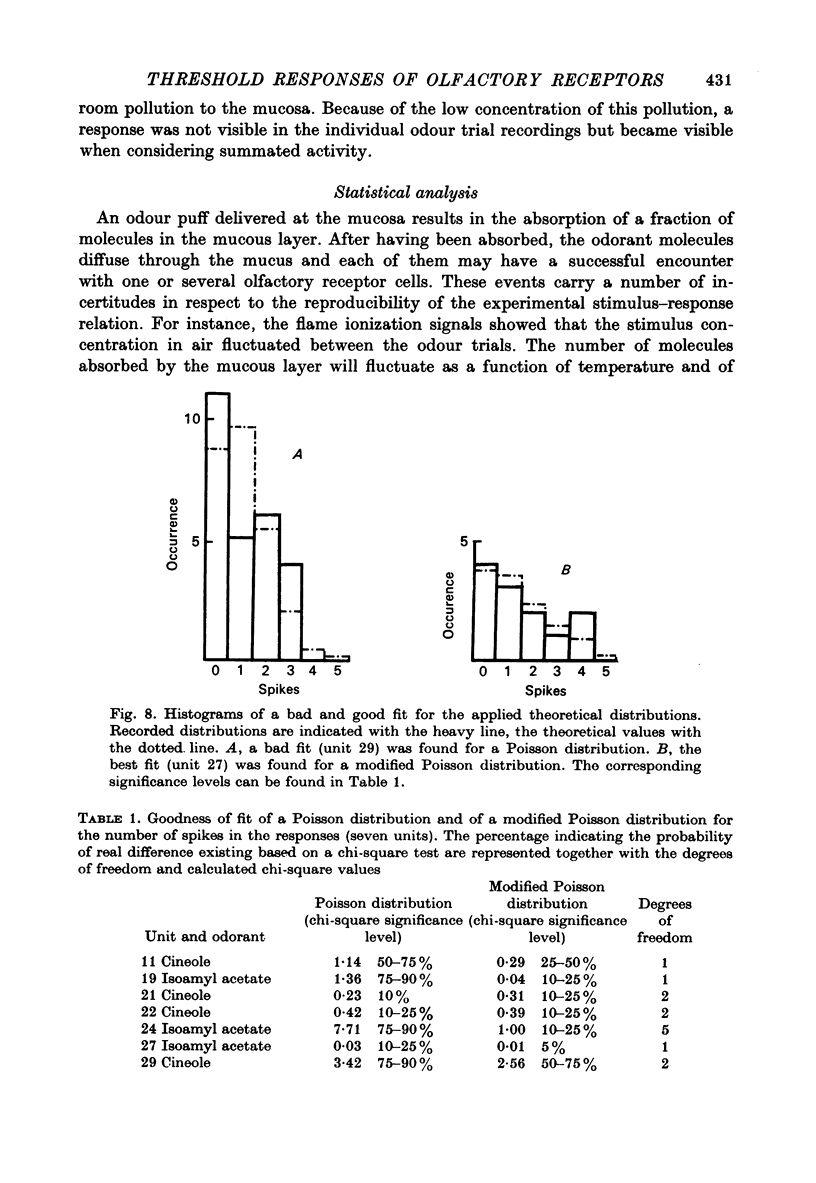
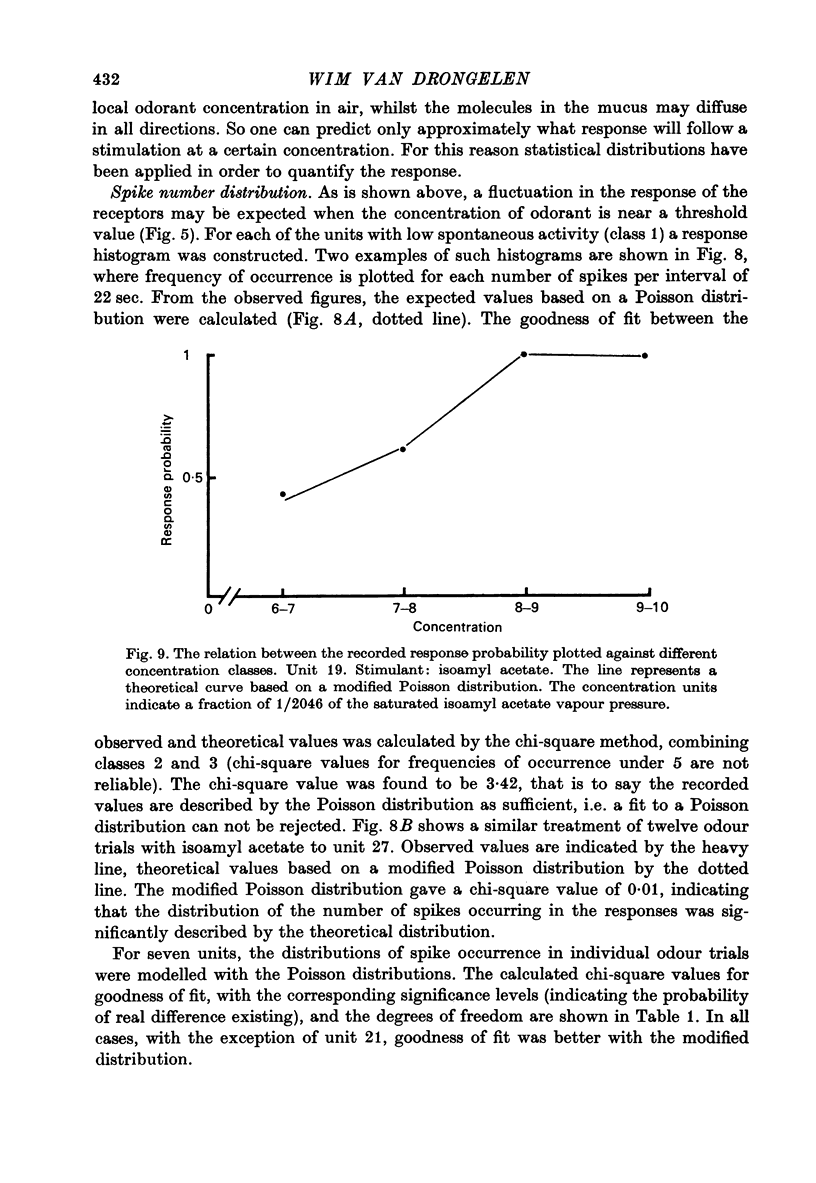
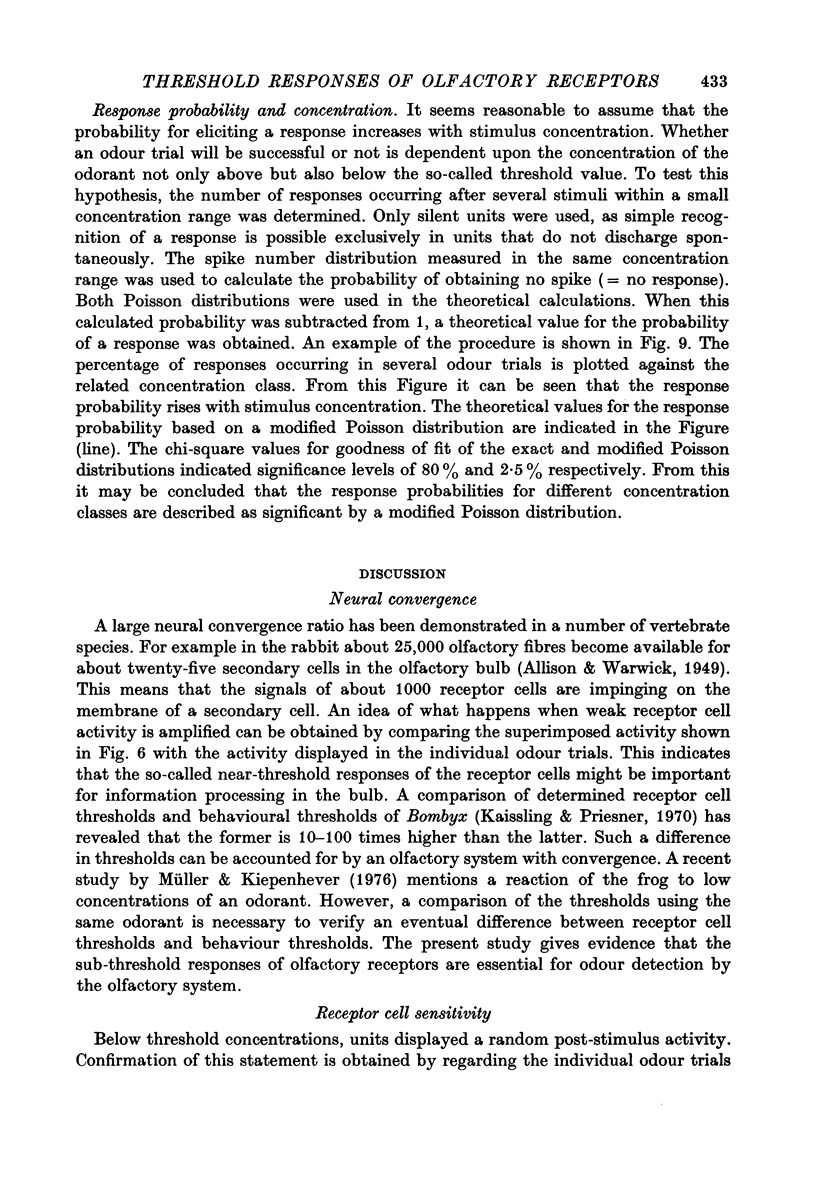
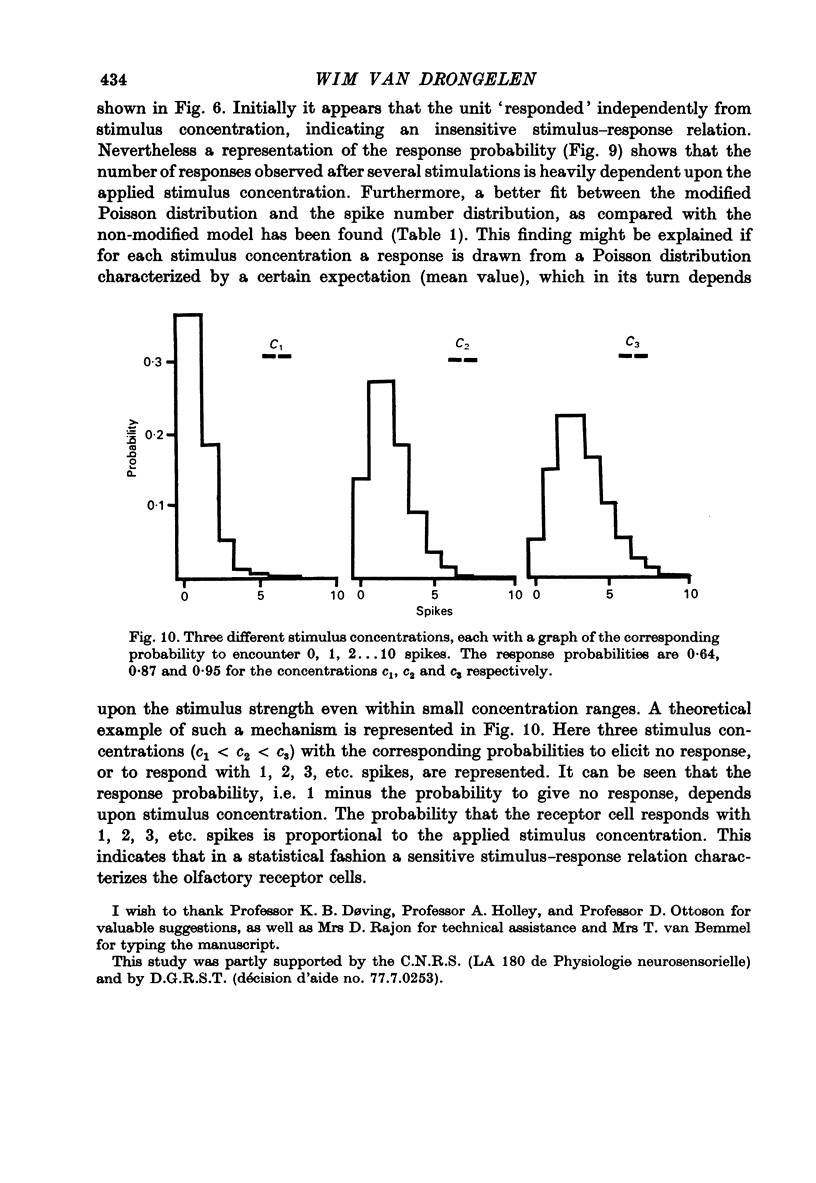

Selected References
These references are in PubMed. This may not be the complete list of references from this article.
- ALLISON A. C., WARWICK R. T. T. Quantitative observations on the olfactory system of the rabbit. Brain. 1949 Jun;72(Pt 2):186–197. doi: 10.1093/brain/72.2.186. [DOI] [PubMed] [Google Scholar]
- Getchell T. V. Unitary responses in frog olfactory epithelium to sterically related molecules at low concentrations. J Gen Physiol. 1974 Aug;64(2):241–261. [PMC free article] [PubMed] [Google Scholar]
- Müller K., Kiepenheuer J. Olfactory orientation in frogs. Naturwissenschaften. 1976 Jan;63(1):49–50. doi: 10.1007/BF00768696. [DOI] [PubMed] [Google Scholar]
- O'Connell R. J., Mozell M. M. Quantitative stimulation of frog olfactory receptors. J Neurophysiol. 1969 Jan;32(1):51–63. doi: 10.1152/jn.1969.32.1.51. [DOI] [PubMed] [Google Scholar]


